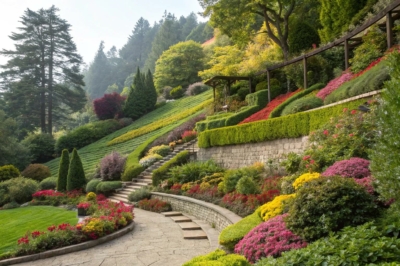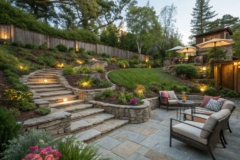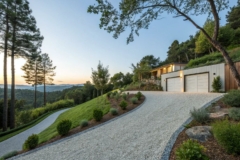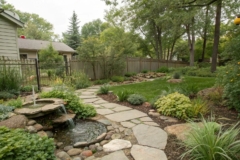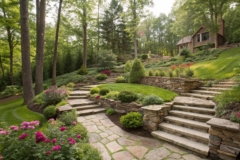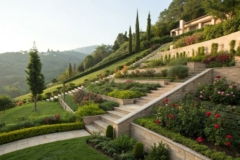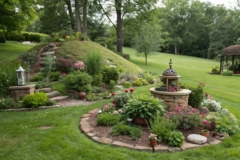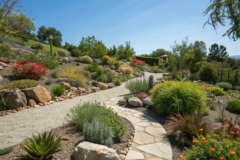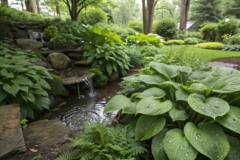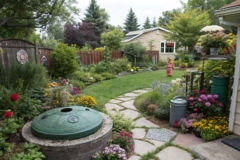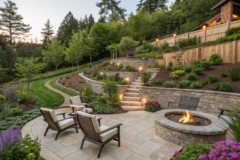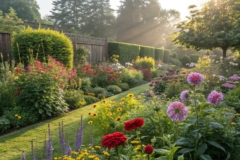1. Terraced Planting
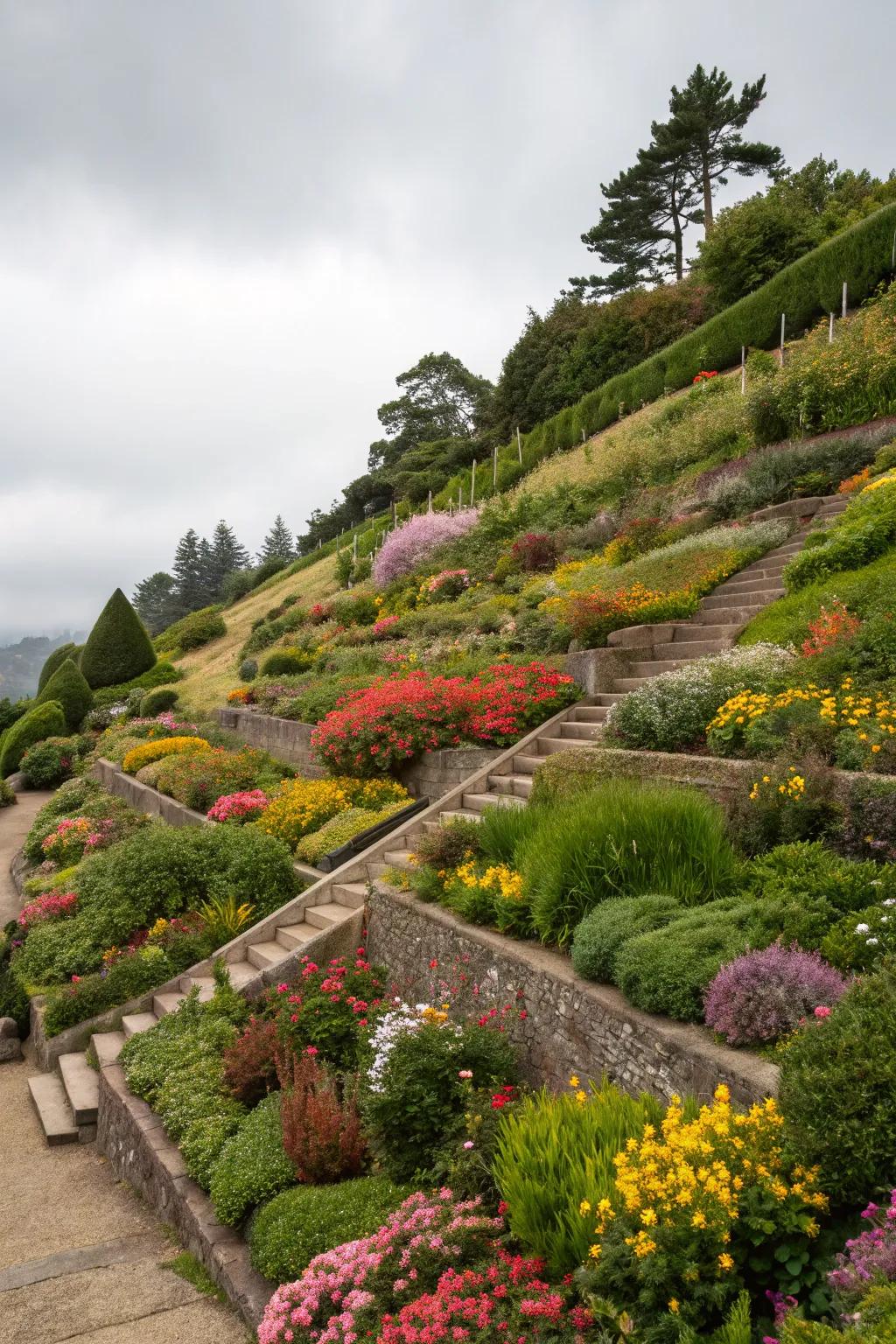
Creating terraces on a slope can add levels of visual intrigue and more planting space. In my backyard, I’ve used this method to plant a mix of flowers and herbs, and it’s a game-changer!
Some ideas to consider:
- Garden Retaining Wall Blocks: Create stunning terraces with durable retaining wall blocks. Enhance your landscape’s beauty and functionality.
- Landscaping Fabric and Staples: Prevent weeds from ruining your terraced garden by using quality landscaping fabric. Ensure neat planting.
- Terrace Garden Planters: Add versatile planters to your terraces to cultivate a variety of flowers and herbs effortlessly.
2. Vertical Gardening
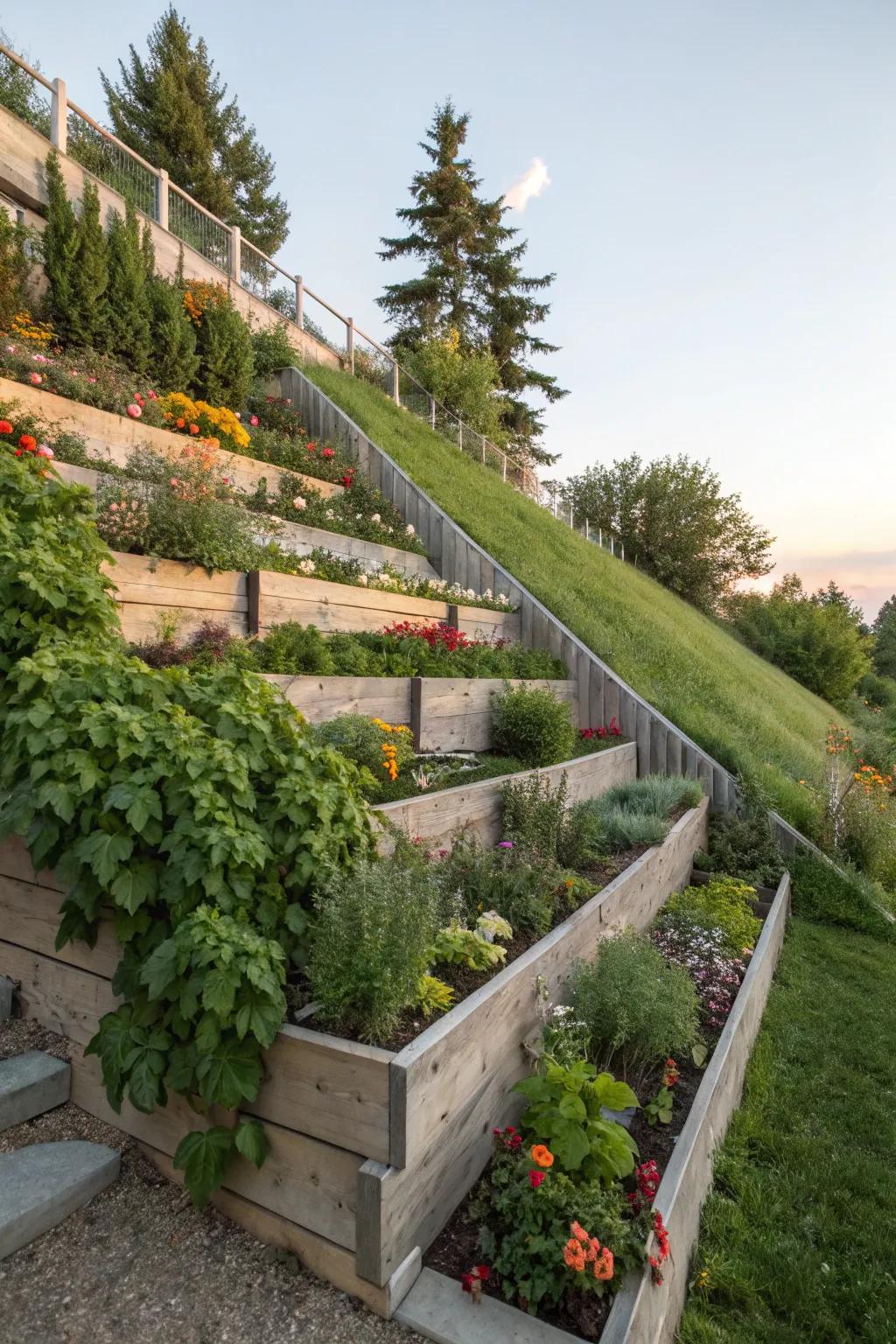
Incorporate vertical gardening to maximize space. My vertical planters add a lush look and make great use of the vertical potential of the slope.
Give these a look:
- Vertical Wall Planters: Transform your slope with vertical wall planters to create a stunning green ambiance.
- Modular Garden Systems: Customize your hillside with modular garden systems for efficient use of vertical space.
- Hanging Planter Kits: Enhance your bank’s look with versatile hanging planter kits, perfect for cascading blooms.
3. Vibrant Flower Beds
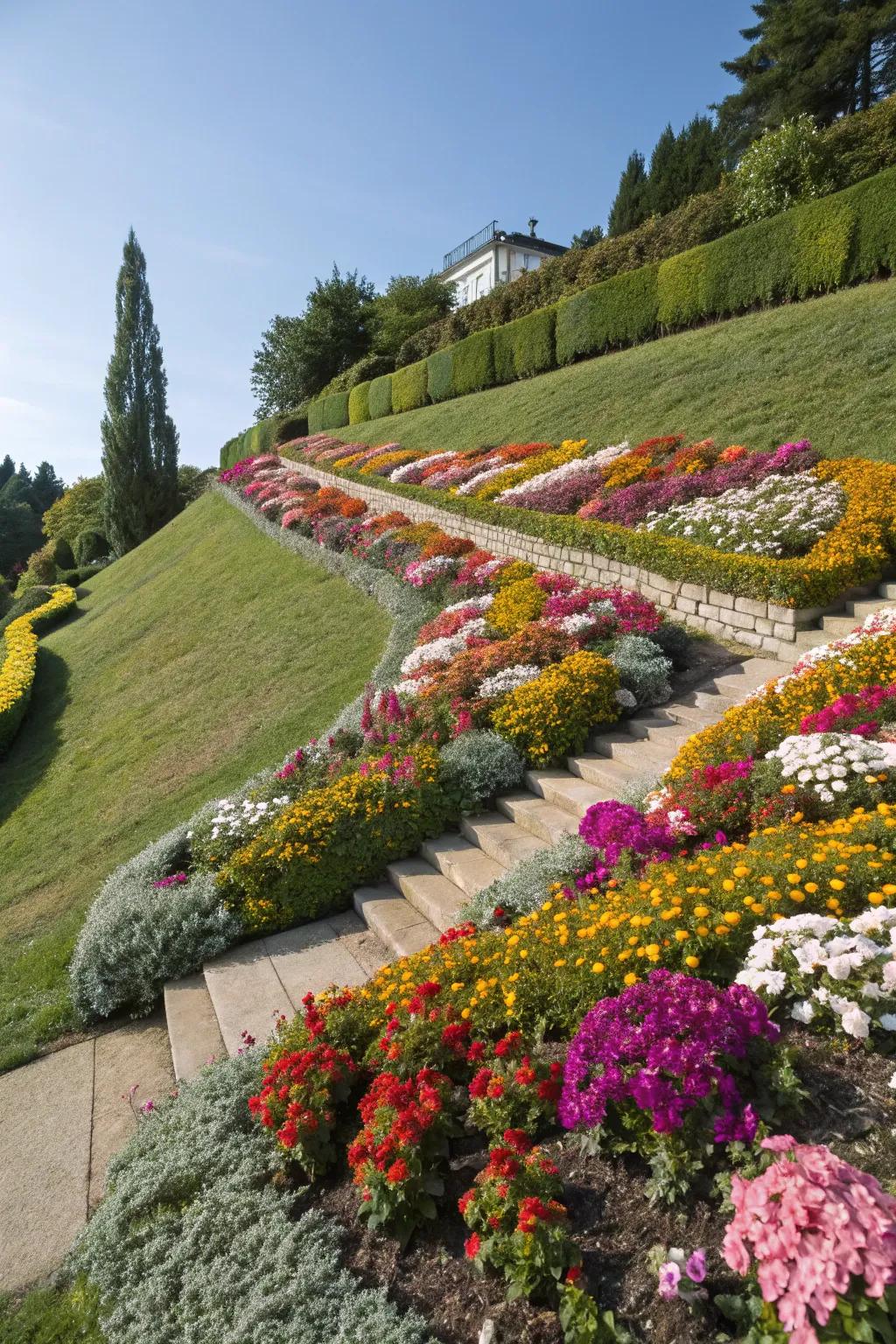
Plant colorful flowers to add pops of color and attract pollinators. My sloped flower beds are a burst of color that never fails to impress.
You might give these a try:
- Organic Flower Fertilizer: Enhance your flower beds with organic fertilizer, boosting growth and thriving colorful blooms.
- Garden Weed Barrier Fabric: Protect your vibrant flowers with a durable weed barrier fabric for a pristine garden look.
- Automatic Drip Irrigation Kit: Simplify watering with an automatic drip irrigation system, keeping your flowers fresh and flourishing.
4. Rock and Stone Accents
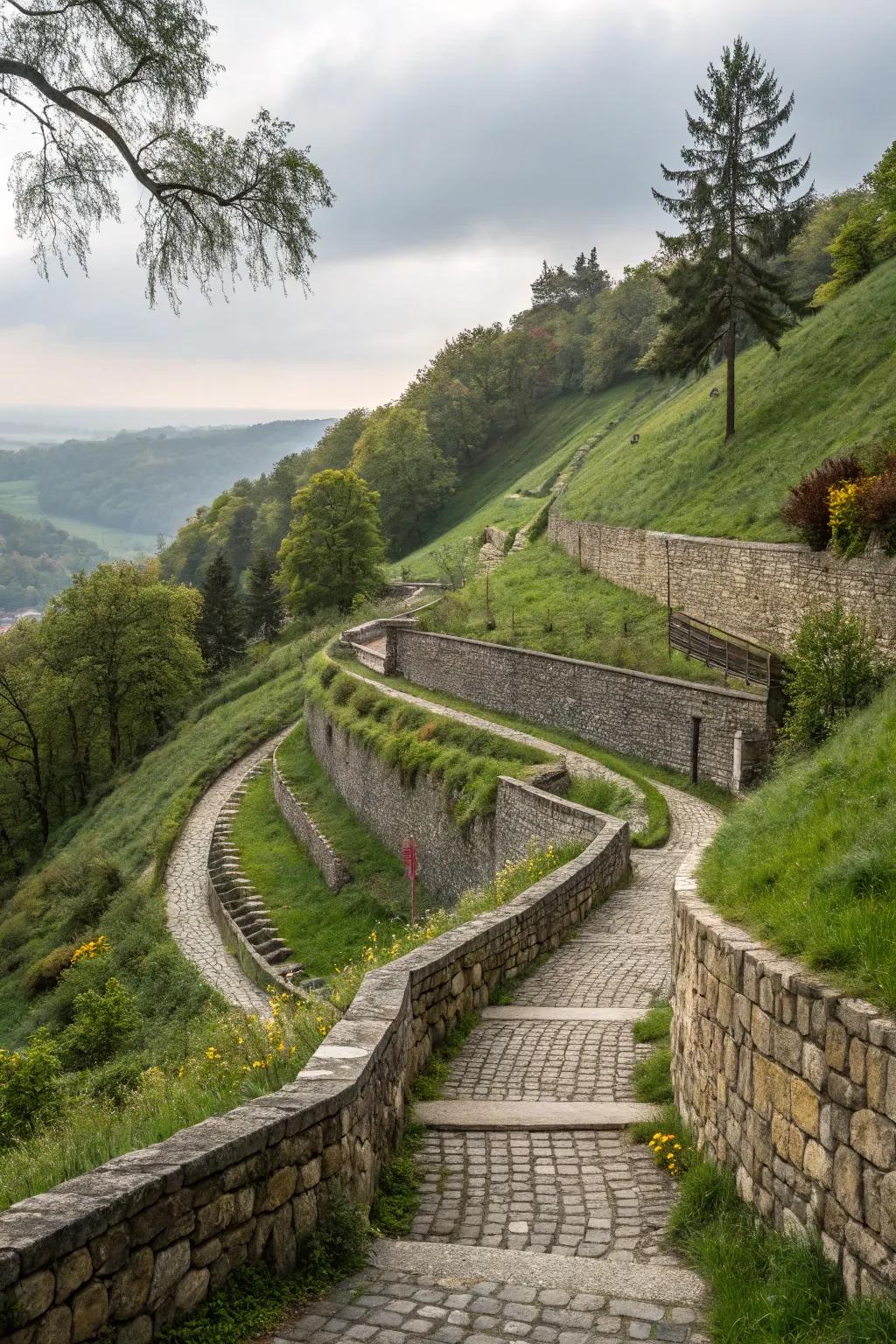
Use rocks to create natural retaining walls or paths. In my garden, stones add structure and a rustic charm that blends beautifully with the greenery.
You might like:
- Natural Stone Retaining Wall Blocks: Enhance your garden’s structure with rustic stone retaining wall blocks, adding natural charm and support.
- Decorative Garden Pathway Stones: Create elegant pathways in your garden with decorative stones, blending seamlessly with lush greenery.
- Landscape Edging Stones: Define and beautify your landscape with sturdy edging stones, perfect for a finished look.
5. Rain Garden
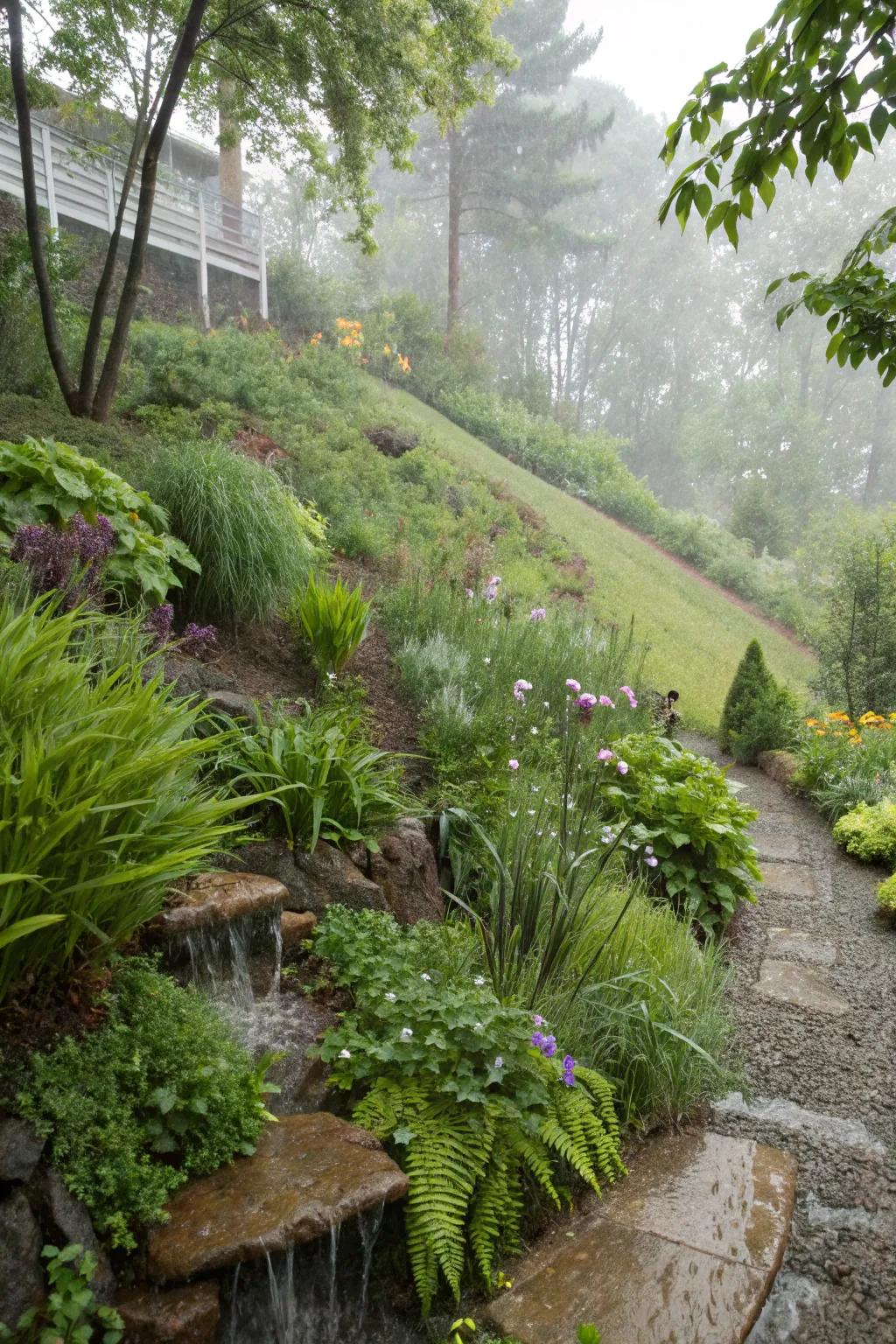
Utilize your slope for a rain garden to manage water runoff. It’s a sustainable way to keep my garden thriving during heavy rains.
These products might help:
- Rain Garden Plant Collection: Enhance your rain garden with diverse, water-tolerant plants ideal for managing water runoff.
- Water Retention Soil: Improve your garden’s water retention and soil health with eco-friendly, absorbent soil mix.
- Decorative Stone Edging: Define your rain garden boundaries elegantly with durable and attractive stone edging.
6. Mulch for Moisture
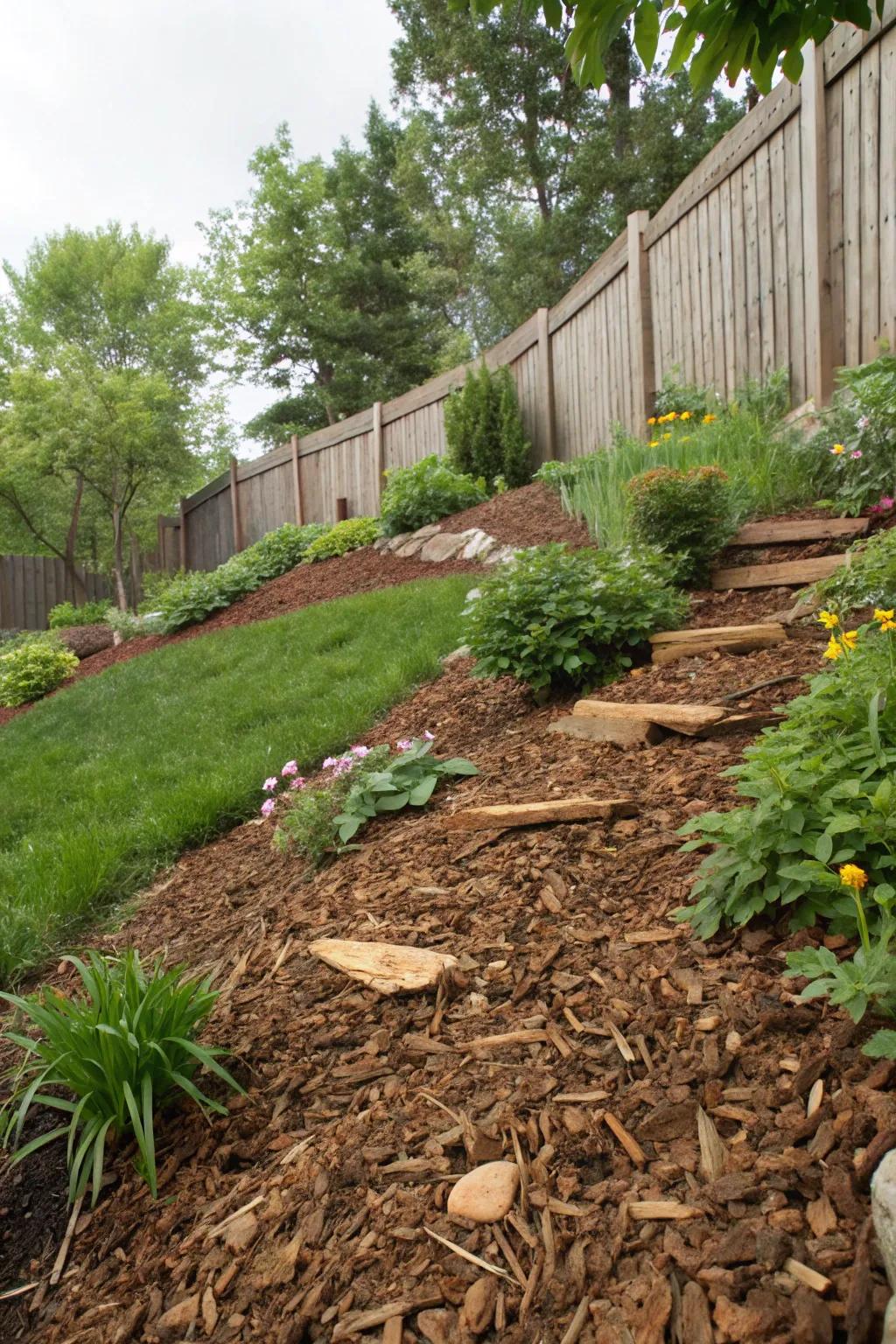
Apply mulch to retain soil moisture and reduce erosion. My slopes stay healthy and low-maintenance with a generous layer of mulch.
May just do the trick:
- Organic Wood Mulch: Enhance soil moisture retention and curb erosion with organic wood mulch in your garden.
- Rubber Mulch Nuggets: Use durable rubber mulch for a clean look that effectively retains moisture and limits weeds.
- Mulch Mat Roll: Install mulch mat rolls for easy moisture control and reduced erosion on your slopes.
7. Spiral Herb Garden
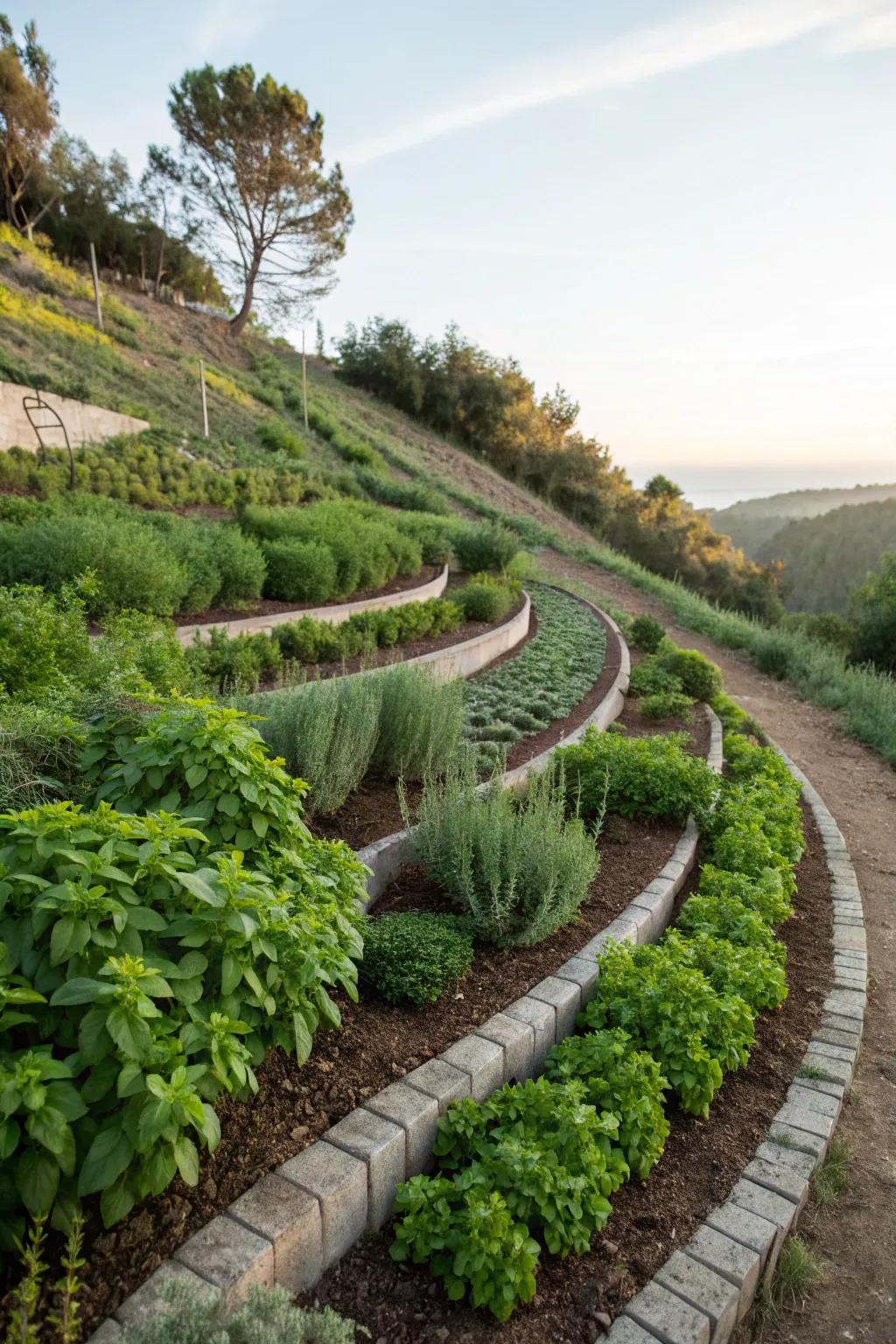
Build a spiral herb garden for a culinary twist on your slope. It’s not only practical but turns my slope into a delightful kitchen garden.
A few helpful options:
- Herb Spiral Garden Kit: Easily create a spiral herb garden with this comprehensive kit, perfect for any sloped yard.
- Garden Edging Stones: Enhance your garden’s structure with durable edging stones, adding both function and beauty.
- Organic Herb Seeds Collection: Start your spiral garden with this collection of organic herb seeds. Fresh flavors await!
8. Sensory Garden
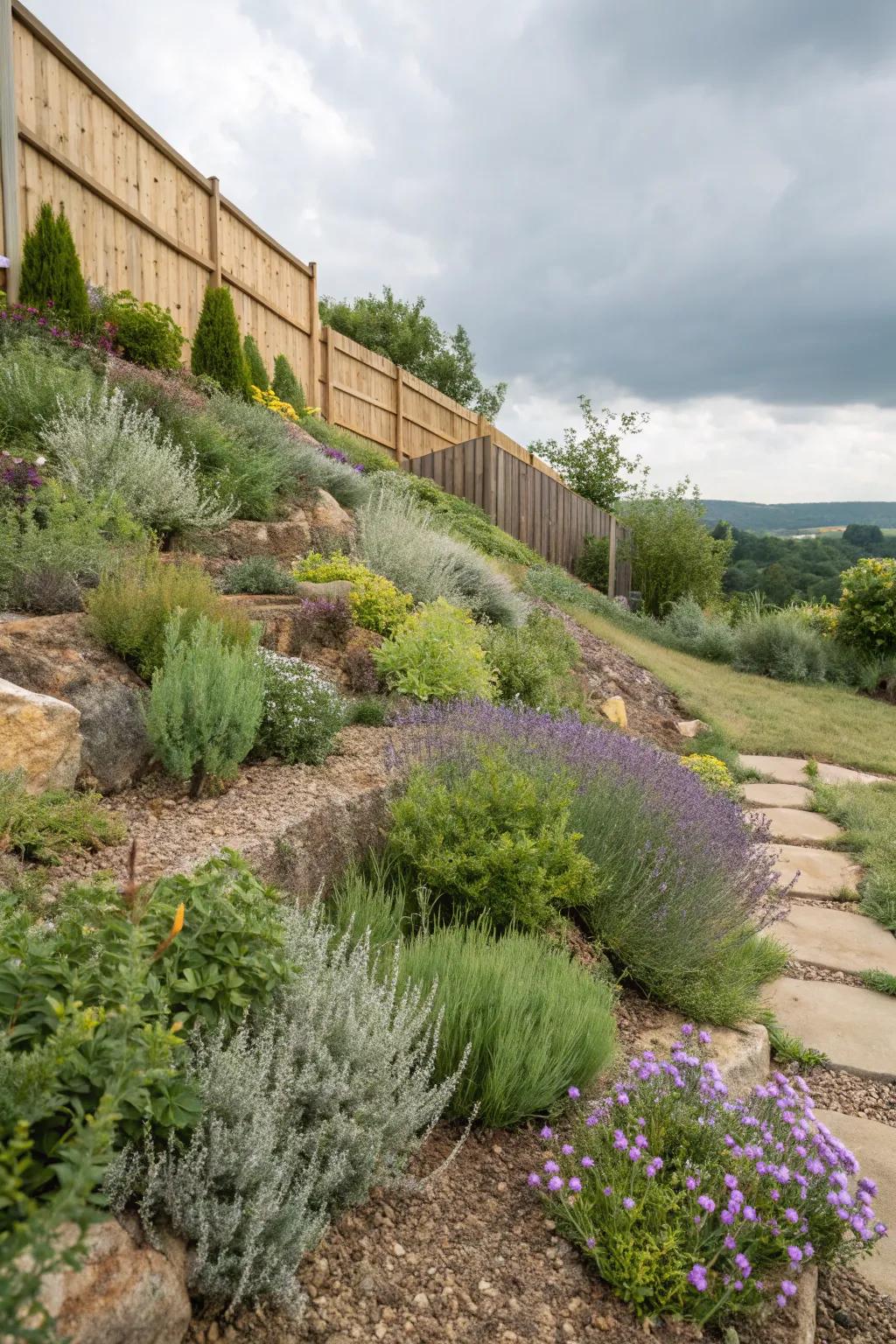
Create a sensory garden with plants that stimulate all the senses. It’s a joy to wander through and experience the different textures and scents.
Check if these fit your needs:
- Aromatic Herb Plant Kit: Transform your garden with aromatic herbs that delight the senses with every breeze.
- Gardening Hand Tools Set: Equip yourself with essential tools to effortlessly maintain your sensory garden oasis.
- Outdoor Solar Garden Lights: Illuminate your garden pathways beautifully, enhancing the sensory experience at night.
9. Artistic Sculptures

Place sculptures for a unique artistic touch. My slope features a couple of sculptures that catch the eye and spark conversation.
Possibly handy products:
- Garden Animal Sculptures: Enhance your garden with whimsical animal sculptures that intrigue and delight visitors.
- Abstract Garden Statues: Add a modern flair with abstract garden statues, perfect for creating focal points.
- Colorful Ceramic Figures: Brighten your landscape with colorful ceramic figures that offer vibrant, artistic appeal.
10. Lighting Accents

Install lighting to highlight features and ensure safety. My solar lights add a magical glow to the slopes at night.
Might be a good match:
- Solar Pathway Lights: Illuminate your garden paths with solar lights for a safe and enchanting evening ambiance.
- LED Landscape Spotlights: Highlight focal points in your yard with energy-efficient LED spotlights for stunning visual impact.
- Outdoor Solar Lanterns: Enhance outdoor aesthetics with solar lanterns, adding charm and gentle illumination to your landscape.
11. Seating with a View
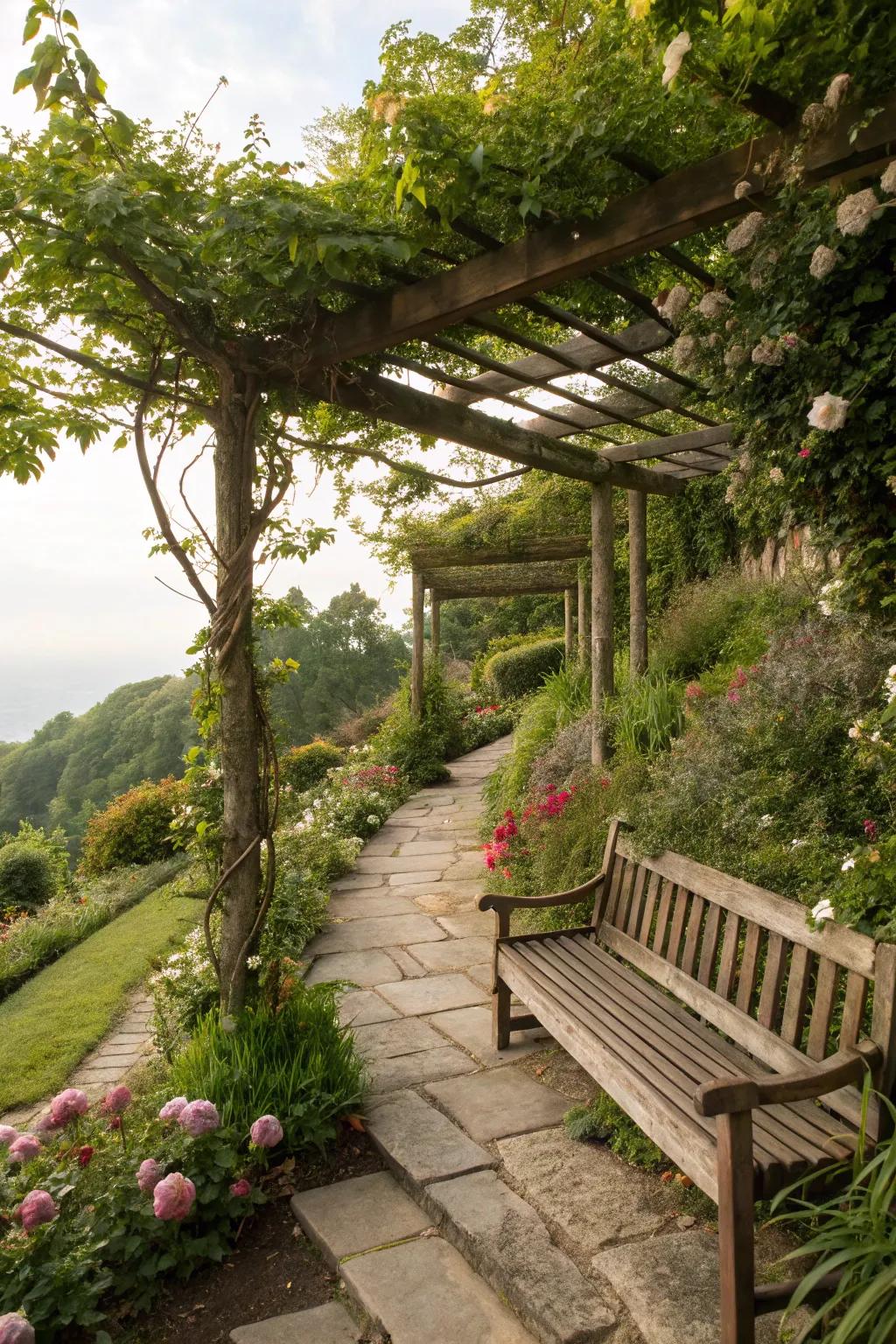
Create a cozy seating area on your slope to enjoy the view. I’ve added a bench under a pergola, perfect for morning coffee and evening relaxation.
A few choices to try:
- Outdoor Wooden Bench: Relax outdoors with a durable wooden bench, perfect for enhancing your garden’s charm.
- Garden Pergola Kit: Create a stunning garden retreat with a pergola, offering shade and style to any space.
- All-Weather Outdoor Cushions: Add elegance and comfort to your seating area with durable, weather-resistant outdoor cushions.
12. Edible Landscape
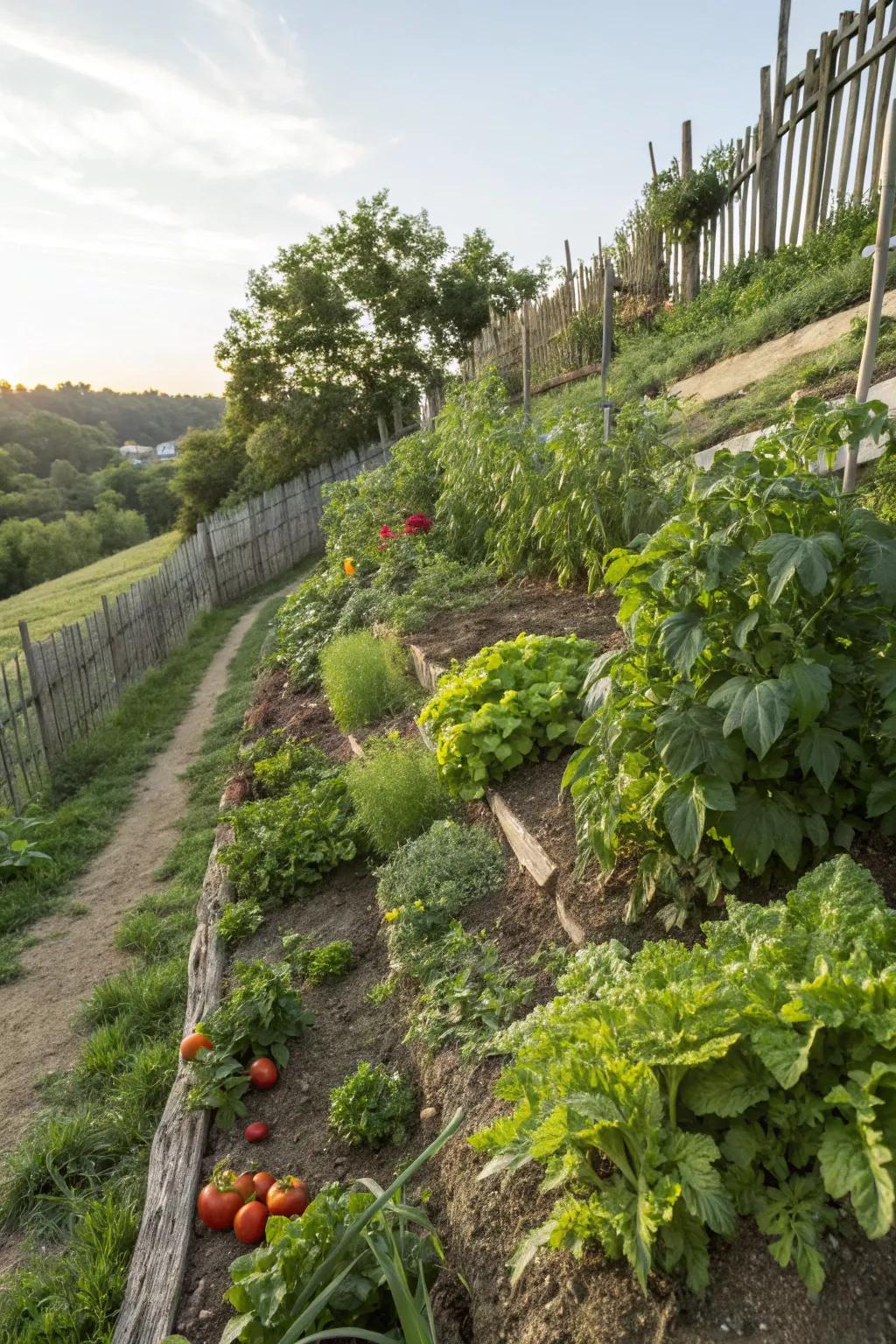
Turn your slope into an edible landscape with vegetables and herbs. It’s rewarding to step outside and pick fresh produce from my garden.
Try these:
- Vegetable Garden Seeds Set: Start your edible garden with this seed set for fresh vegetables right from your slope.
- Herb Planter Kit: Grow fresh herbs on your slope easily with this all-in-one herb planter kit.
- Garden Soil for Vegetables: Enhance your slope’s soil quality with this nutrient-rich garden soil for thriving plants.
13. Fruiting Shrubs
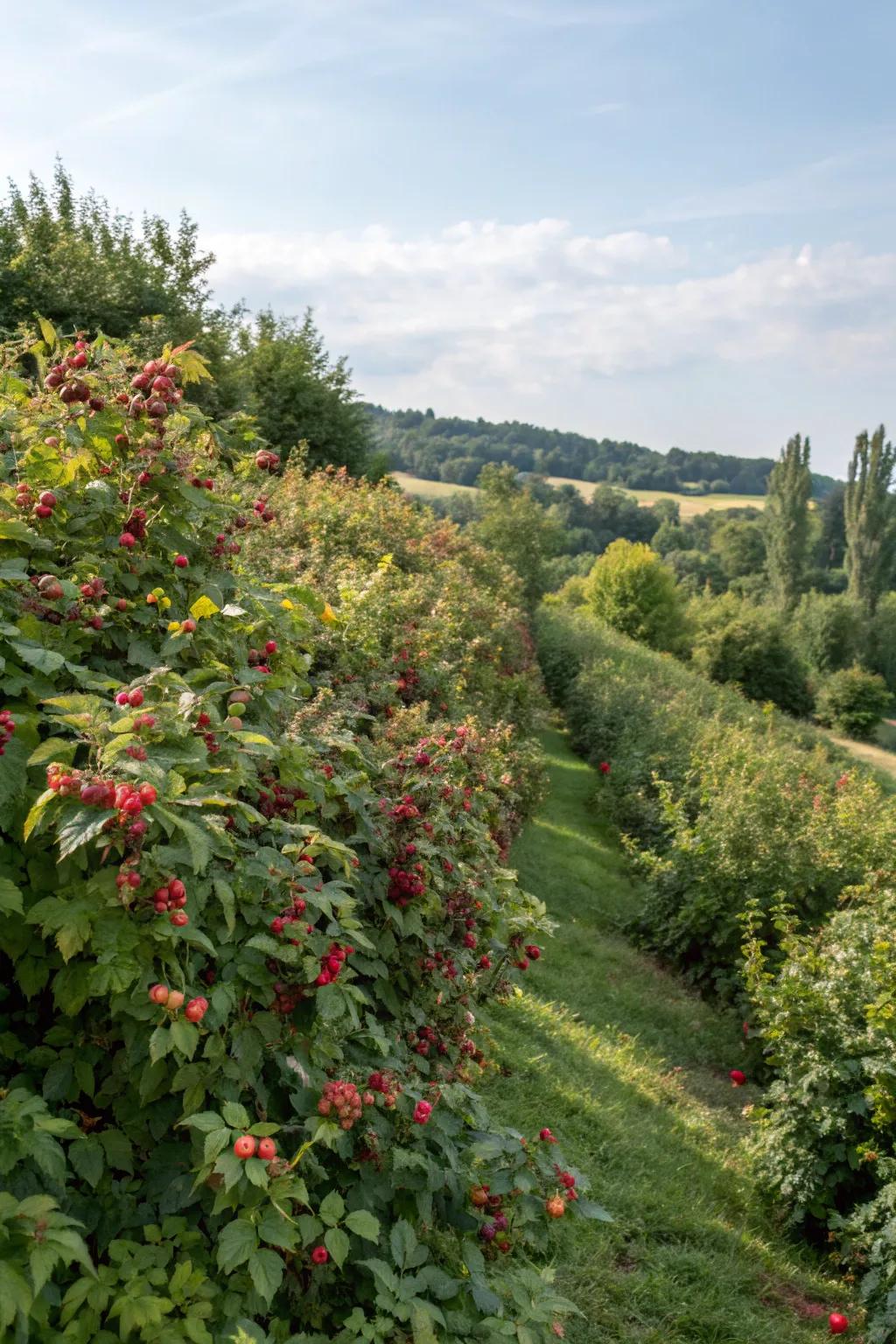
Plant fruiting shrubs like blueberries for beauty and bounty. I love harvesting fresh berries right off my slope!
These products might be useful:
- Organic Blueberry Bush Starter Kit: Cultivate vibrant blueberries effortlessly, right in your garden. Perfect for fresh and delicious harvests.
- Berry Fertilizer and Soil Enhancer: Boost your fruiting shrubs’ growth with this premium fertilizer, ensuring stronger and healthier berries.
- Bird Netting for Berry Bushes: Protect your berry yield from birds with durable and easy-to-install garden netting.
14. Ornamental Grasses
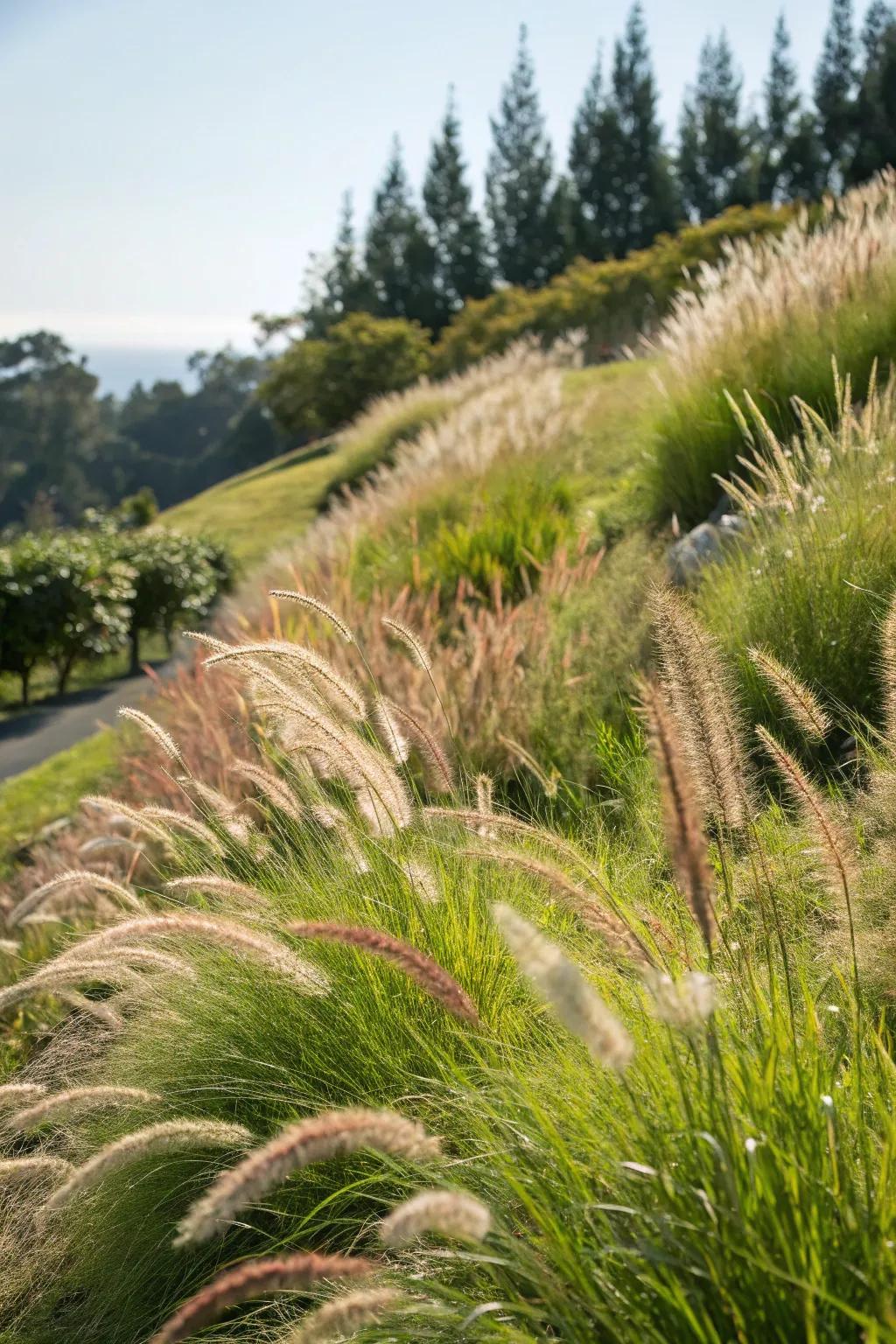
Plant ornamental grasses for texture and movement. They sway beautifully in the breeze and add a graceful touch to my slope.
Useful items to consider:
- Ornamental Grass Seeds: Enhance your slope with lush ornamental grasses. Easy to plant and maintain for lasting beauty.
- Decorative Garden Stone Edging: Define your grass areas with stylish stone edging. Durable and perfect for enhancing landscapes.
- Automatic Drip Irrigation Kit: Maintain your ornamental grasses effortlessly with a drip irrigation system. Convenient and water-efficient.
15. Pathways for Exploration
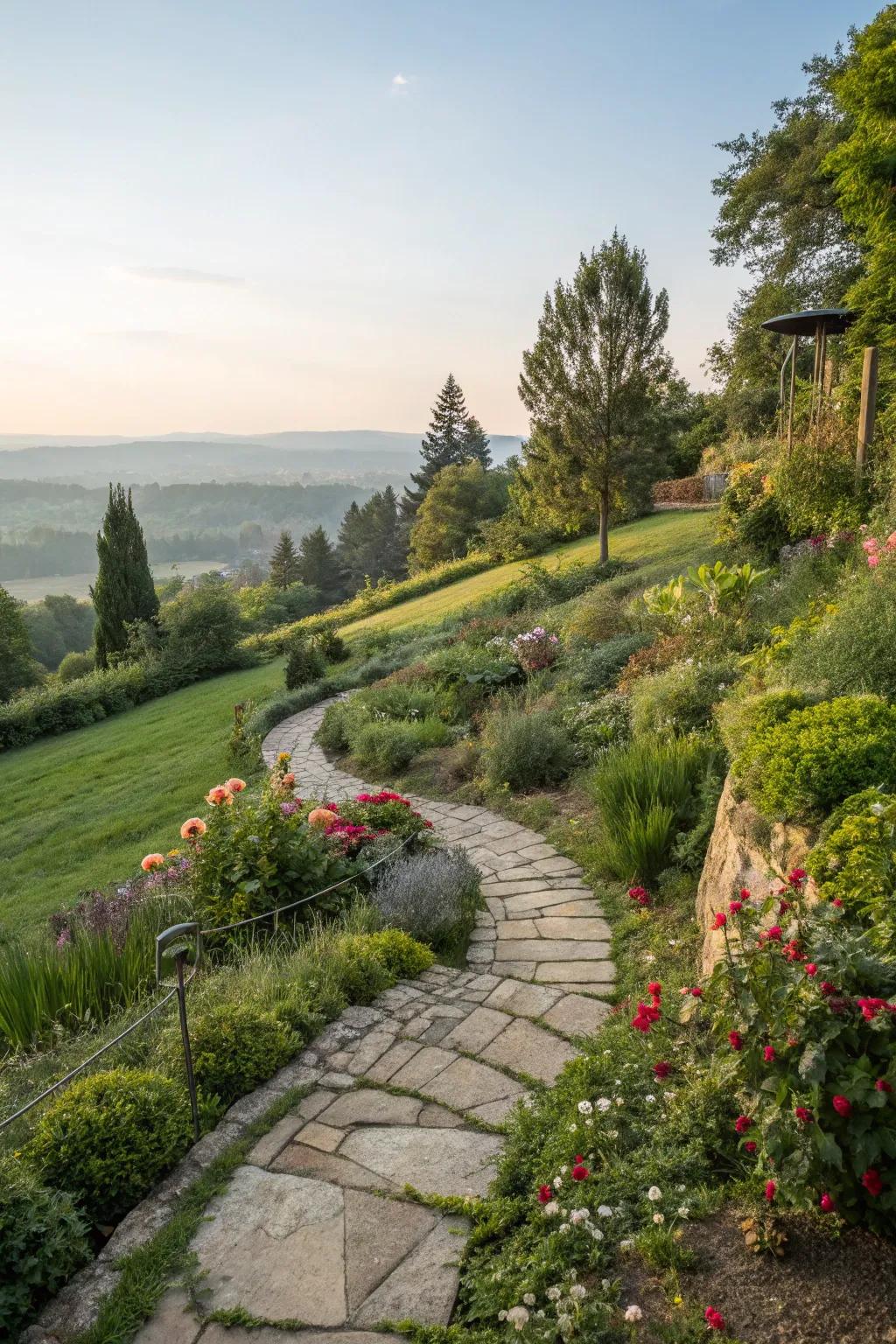
Designing pathways on a slope invites exploration and adds functionality. I love how my garden paths guide guests through the space effortlessly.
Maybe worth checking out:
- Garden Pathway Stones: Enhance your pathways with durable stones, creating a charming and functional landscape feature.
- Solar Pathway Lights: Illuminate your garden paths with eco-friendly solar lights for added beauty and safety.
- Decorative Garden Edging: Define the edges of your pathways for a neat and visually appealing garden layout.
16. Waterfall Wonder
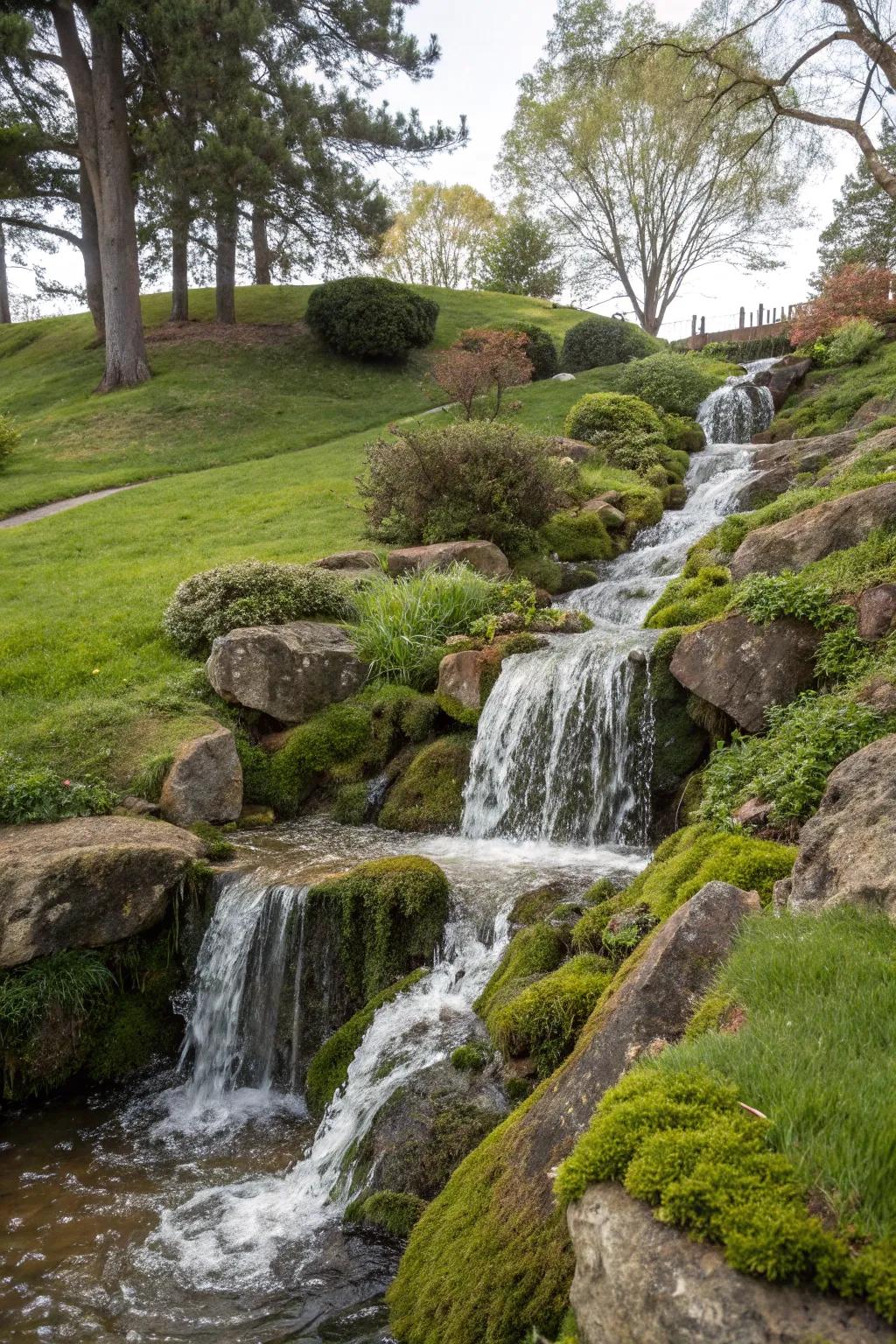
Turn your slope into a serene retreat with a waterfall feature. I installed one last summer, and the sound of trickling water is pure bliss.
A few things you might like:
- Outdoor Waterfall Pump: Enhance your waterfall with a reliable pump for continuous water flow and serene ambiance.
- Natural Stone Waterfall Kit: Create a beautiful waterfall with an easy-to-install stone kit for natural elegance.
- Solar LED Pond Lights: Illuminate your waterfall with energy-efficient solar LED lights for stunning nighttime beauty.
17. Wildflower Paradise
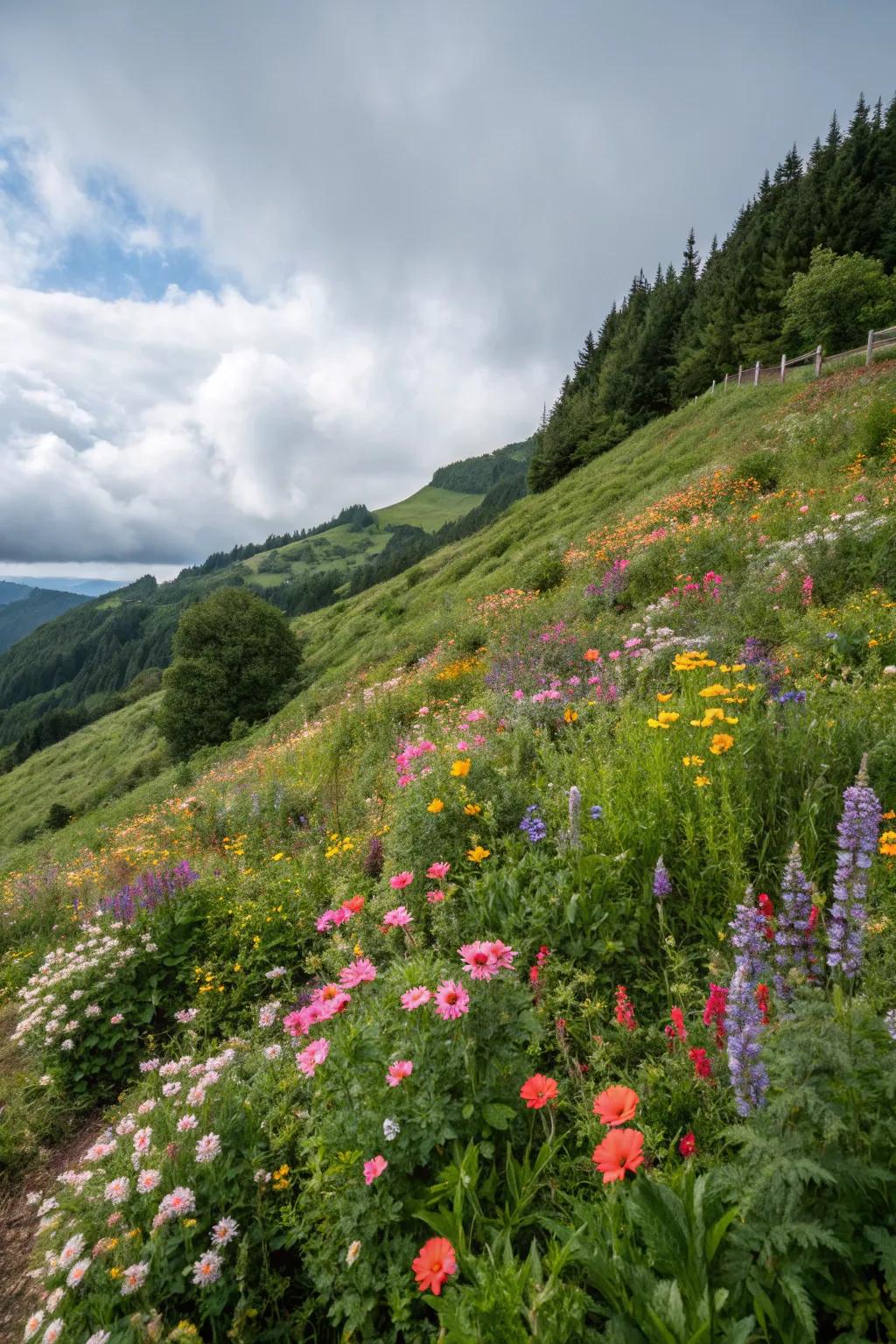
Scatter wildflower seeds for a meadow-like charm. It’s a delight watching my slope burst into a sea of colors each spring.
Some handy options:
- Wildflower Seed Mix: Transform your slope with a vibrant wildflower mix for a stunning seasonal display.
- Seed Spreader: Effortlessly sow your wildflower seeds with a user-friendly spreader for even coverage.
- Garden Watering Can: Nurture your wildflowers with a durable watering can designed for precise hydration.
18. Ground Cover Magic
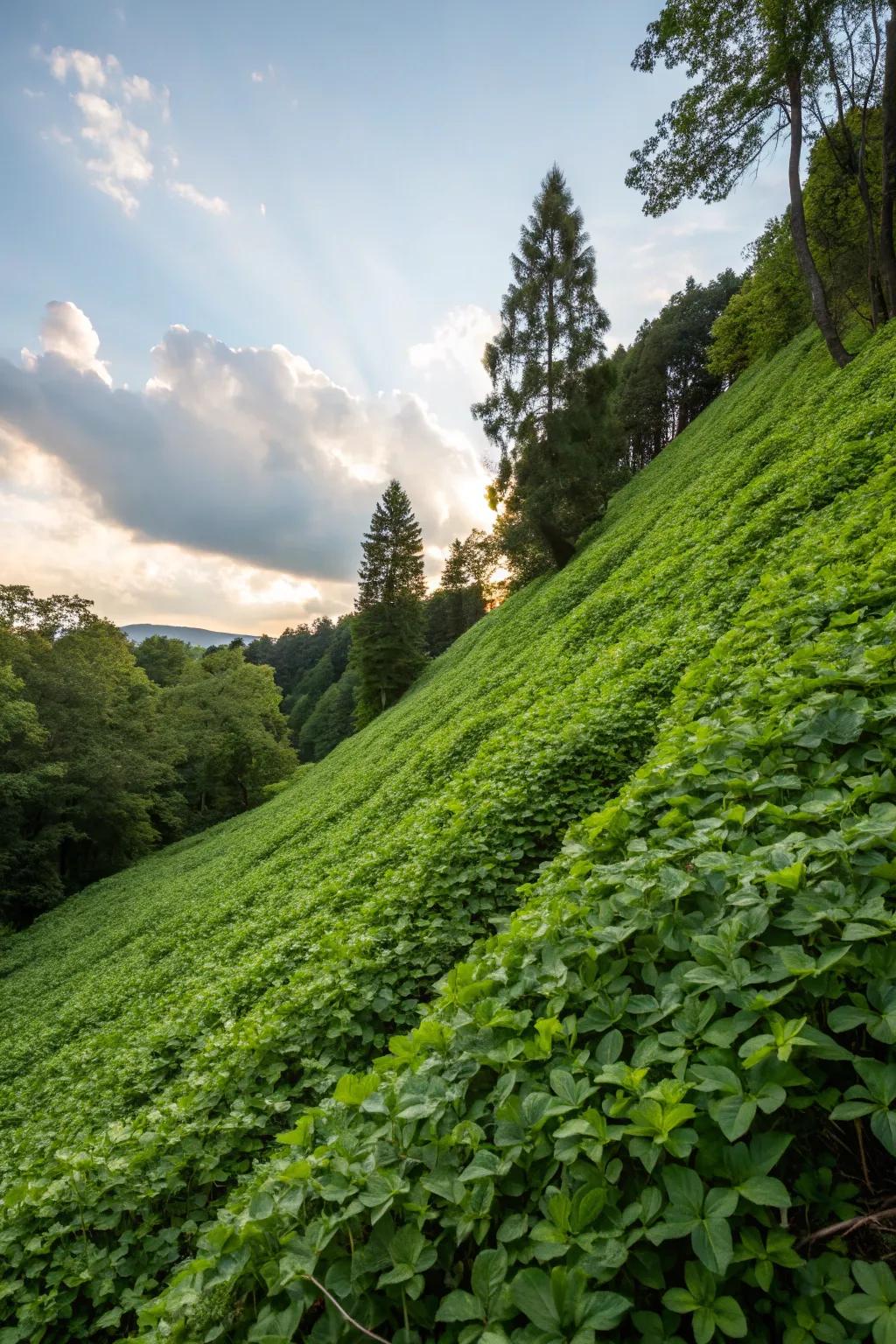
Opt for ground covers like ivy or creeping thyme to blanket large areas. In my experience, they keep weeds at bay and create a lush carpet of green.
A few relevant products:
- Ivy Ground Cover Seeds: Transform your landscape with ivy seeds, perfect for creating a lush, weed-resistant ground cover.
- Creeping Thyme Seeds: Elevate your bank landscaping with creeping thyme seeds, offering vibrant greenery and weed control.
- Garden Fabric Weed Barrier: Enhance ground cover growth and prevent weeds with a durable, reliable garden fabric barrier.
19. Boulder Features
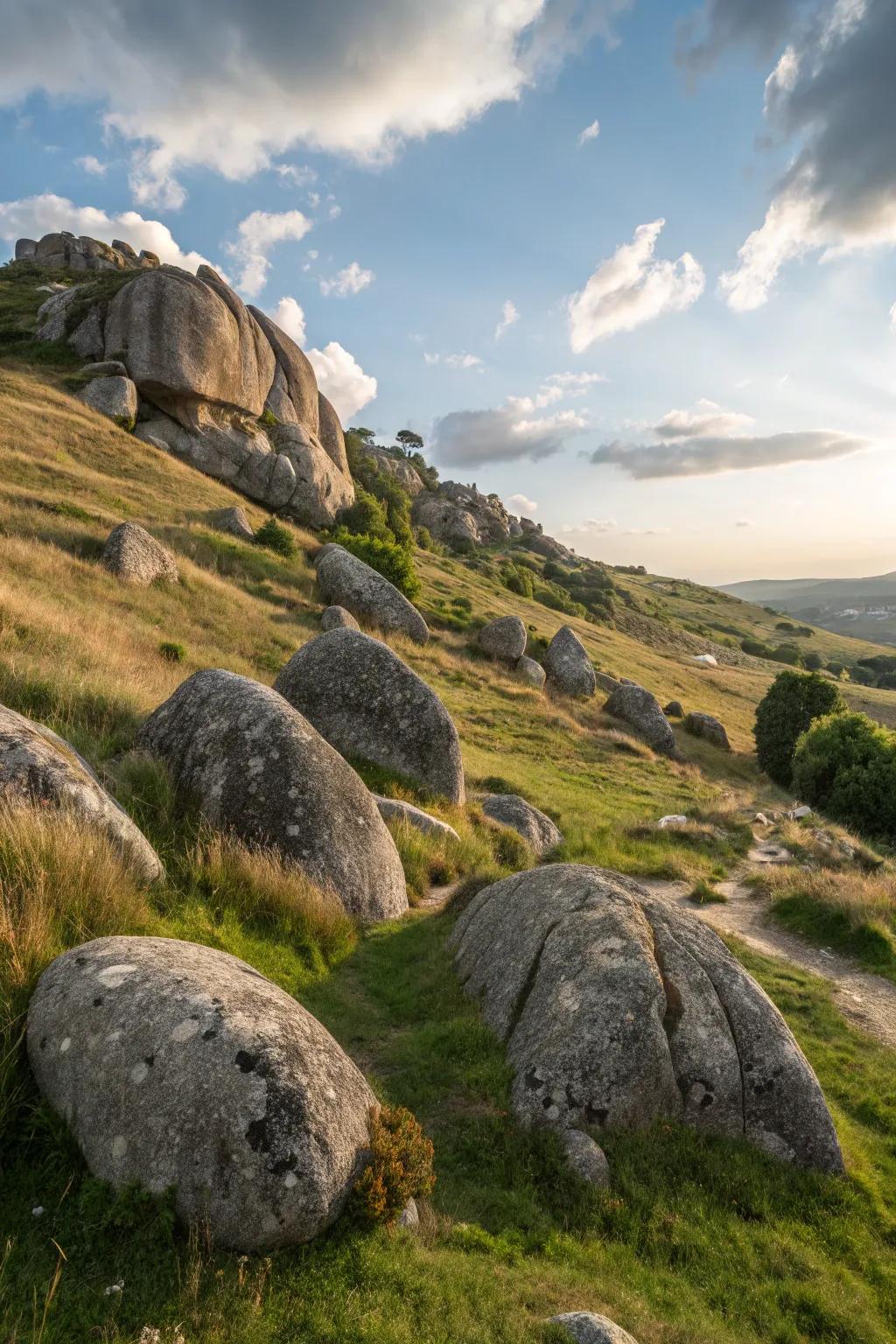
Add large boulders for a dramatic effect and natural stability. They’ve become focal points in my garden, offering both function and form.
Explore these options:
- Artificial Landscape Boulders: Enhance your garden’s aesthetics with lightweight, durable artificial boulders for a natural look.
- Garden Rock Lights: Illuminate your boulders with solar-powered garden rock lights for a stunning evening ambiance.
- Rockery Stone Assortment: Create diverse rock formations in your garden using a rockery stone assortment for unique designs.
20. Naturalistic Beauty
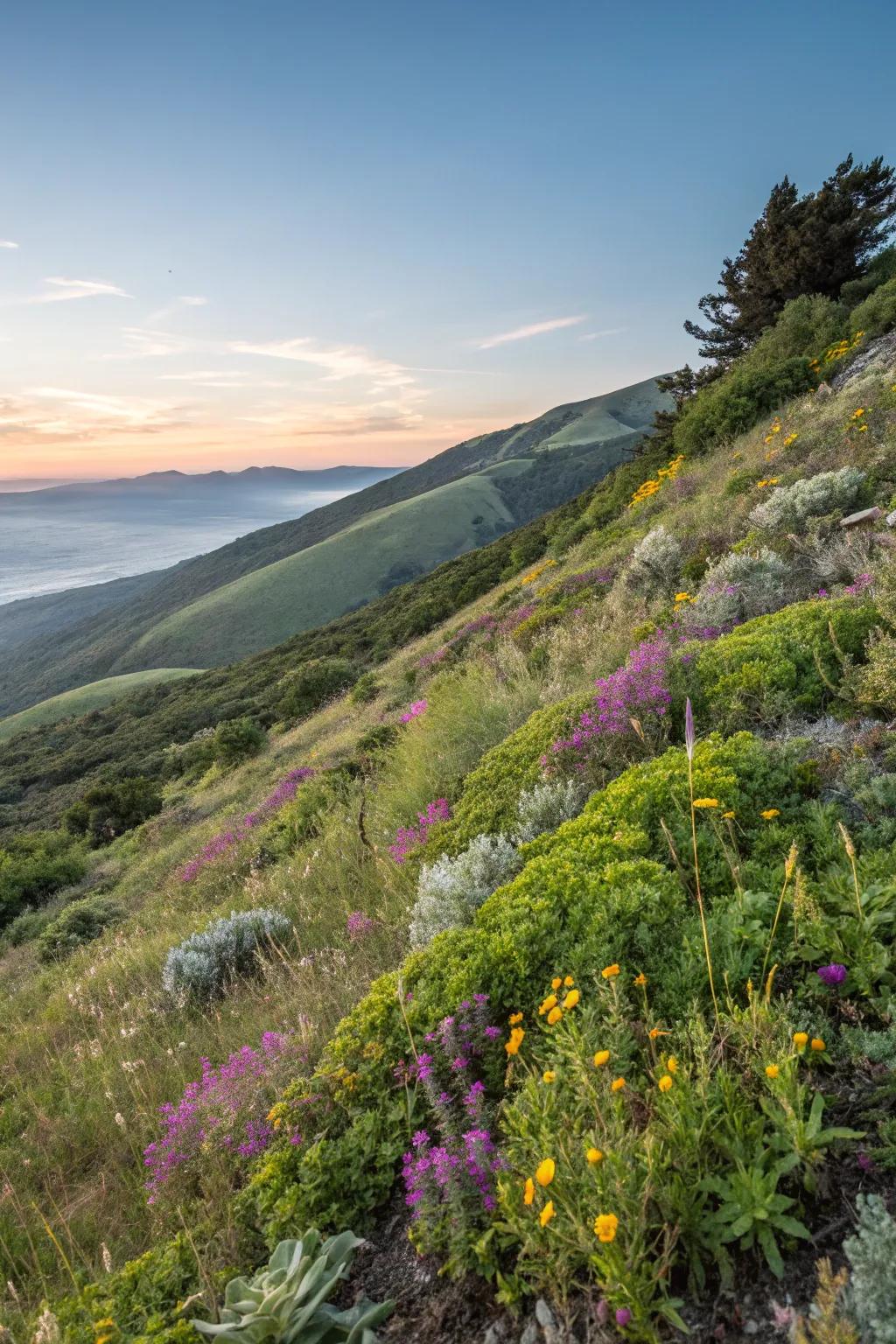
Blend your slope with the surrounding landscape using a mix of native plants. This approach helped me create a seamless transition from garden to natural environment.
Items that may come in handy:
- Native Wildflower Seed Mix: Enhance your slope with vibrant native wildflowers that attract pollinators and blend seamlessly.
- Garden Soil for Native Plants: Use nutrient-rich soil to support healthy growth of native plants on your landscape slope.
- Organic Mulch for Landscaping: Retain soil moisture and suppress weeds naturally with this organic mulch ideal for native landscapes.
